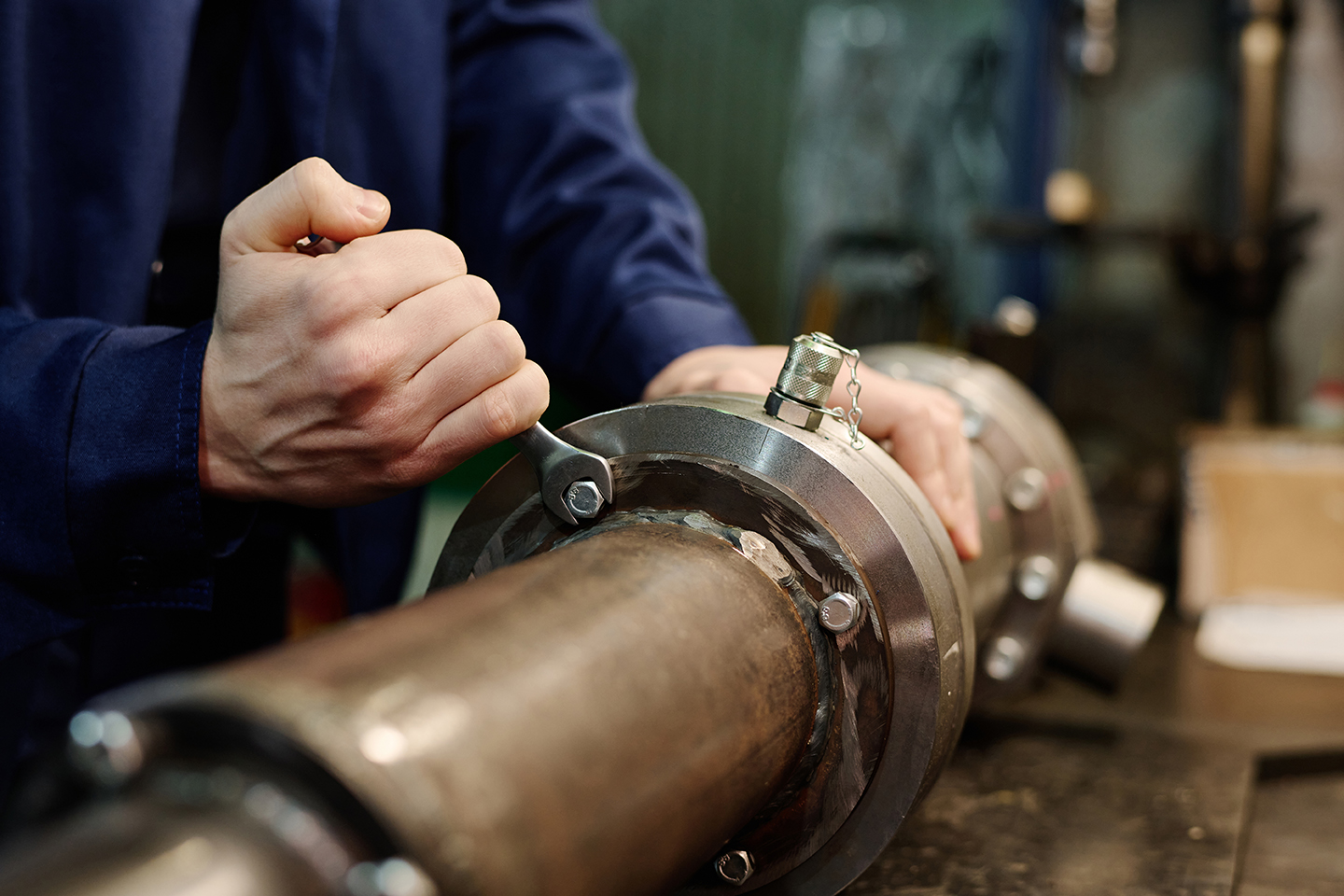Industrial equipment works under a lot of pressure. In places like oilfields, refineries, and chemical plants, flanges and gaskets help keep pipes and machines sealed tightly. These small parts may not look like much, but they play a big role in keeping everything safe and running smoothly.
If flanges or gaskets wear out or are not taken care of properly, leaks can happen. These leaks can lead to costly shutdowns, safety risks, and damage to equipment. Even the best sealing systems face heat, pressure, and harsh chemicals every day, and over time, that takes a toll.
Regular maintenance helps these parts last longer, work better, and keep your entire operation running without problems.
Why Flanges and Gaskets Matter in Industrial Operations
Flanges and gaskets are key components in many industrial systems. They connect pipes, valves, pumps, and other equipment while forming a secure, leak-resistant seal that holds up under pressure, heat, and vibration.
Gaskets are usually made from flexible materials like PTFE, graphite, or elastomers. They are placed between two flanges and compressed to create a tight seal. Their performance depends on several factors, including the surface condition of the flanges, the amount of bolt torque, and the compatibility of materials.
Flange assemblies help maintain pressure on the gasket. If the flange surface is damaged, corroded, or not aligned correctly, the seal can weaken or fail, leading to leaks or equipment damage.
Common Causes of Flange and Gasket Degradation
Even with the right materials and proper design, flanges and gaskets can wear down over time. In many cases, the main problem is not the parts themselves but how they are handled during use or maintenance. Small mistakes can lead to leaks, damage, or complete failure of the seal.
Here are some of the most common reasons these parts break down:
- Thermal cycling: Frequent temperature fluctuations can expand and contract gasket materials, leading to compression set and eventual failure.
- Improper torqueing: Uneven or insufficient bolt tension can compromise sealing pressure and introduce leak paths.
- Chemical attack: Exposure to aggressive fluids or gases degrades incompatible gasket materials over time. Understanding chemical resistance is crucial for proper material selection.
- Surface irregularities: Scratched or pitted flange faces reduce the effectiveness of the gasket and create voids.
- Vibration and mechanical shock: High levels of vibration can loosen bolts or damage the sealing surface.
- Over-tightening: This can crush the gasket and reduce its elasticity, making it ineffective.
The Role of Preventive Maintenance in Sealing System Performance
Proper care of your flanges and gaskets should be routine and take place long before something goes wrong. A proactive approach helps catch small problems early, before they cause leaks, shutdowns, or safety hazards. Regular inspections and care help keep sealing systems working as they should.
These are some important steps in a strong maintenance routine:
- Visual inspections to check for corrosion, wear, or damage to flanges and gaskets.
- Gasket surface checks to spot cracks, swelling, or brittleness.
- Using proper tools to measure bolt tension and to ensure each bolt is tightened correctly.
- Cleaning and refinishing of flange surfaces to keep the seal smooth and secure.
- Lubricating bolts to help apply even pressure and prevent seizing.
The performance of any gasket depends on how well it is maintained. Overlooking early signs of wear can lead to costly leaks and longer downtimes.
5 Signs That It’s Time to Replace a Gasket or Refinish a Flange
Not all gaskets are designed to have the same service life. Factors such as application pressure, fluid type, and operating temperature influence replacement intervals. Here are key indicators that it’s time to service or replace your flange and gasket system:
- Persistent leaks after bolt retightening;
- Gasket extrusion from flange faces;
- Evidence of blowout or chemical swelling;
- Irregular flange surfaces with pitting or scoring; and
- Bolt elongation or shearing.
Routine inspection during scheduled downtime can uncover these early signs of wear and tear. Investing in proper maintenance procedures can prevent failures that would otherwise halt operations or require full system overhauls.
Choosing the Right Sealing Solutions for Long-Term Reliability
Not all gaskets or flanges are suitable for every industrial application. Selecting the right materials and configurations is a vital part of achieving long-term reliability. Key factors to consider include:
- Operating pressure and temperature range;
- Media compatibility (chemical exposure);
- Flange type (raised face, flat face, ring-type joint, etc.); and
- Material compliance with industry standards (API, ASME, etc.).
For demanding applications, metal gaskets or spiral wound gaskets may offer superior longevity and resistance to blowout compared to standard elastomeric types. When paired with properly machined and maintained flanges, these solutions deliver higher performance under extreme conditions.
Best Practices for Flange and Gasket Maintenance
Ensuring long-term reliability requires more than just inspections. Here are five core practices that optimize gasket lifespan and prevent flange damage:
- Standardize installation procedures. Always follow manufacturer recommendations for bolt torque and tightening sequence.
- Use calibrated tools. Rely on torque wrenches and tensioners to ensure even clamping.
- Train your team. Operators and maintenance staff must understand proper handling, storage, and installation of gaskets.
- Log every inspection. Keep detailed records to track wear patterns and schedule future replacements accordingly.
- Inspect bolt integrity. Check for galling, elongation, or signs of fatigue in flange hardware.
These best practices not only protect your investment in sealing components, but also reduce the frequency of shutdowns, minimize maintenance costs, and improve safety outcomes.
The Hidden Costs of Poor Gasket and Flange Maintenance
When sealing systems are not properly maintained, the problems can quickly add up. Even small issues with gaskets or flanges can lead to big losses in time, money, and safety. Overlooking maintenance often creates more trouble than the cost of prevention.
Here are some of the most common and costly outcomes:
- Production downtime: Leaks can stop operations without warning and cause emergency shutdowns.
- Environmental violations: Escaping gases or fluids may lead to legal trouble or expensive fines.
- Increased maintenance costs: Equipment connected to failed seals often needs repairs or replacement.
- Worker safety risks: Pressurized leaks can result in serious injuries or dangerous working conditions.
- Lost product: Materials lost through leaks reduce output and lower overall profits.
Keeping up with gasket and flange maintenance is not just about following procedure. It helps protect people, reduce repair costs, and keep the entire operation running efficiently.
How Coastal Resource Group Supports Reliable Sealing Solutions
At Coastal Resource Group, we know that strong industrial performance depends on more than just the right equipment. It also depends on steady, reliable operation with no delays. That is why we provide high-quality flanges, gasket materials, and hardware built to handle the tough demands of industrial sites.
From oilfields in South Texas to refineries along the Gulf Coast, we are a trusted partner for fast, dependable supplies. Our team is available 24/7, and our products ship quickly from our Texas locations to help you avoid downtime.
We carry a full inventory of flanges, gaskets, HDPE pipe, fusion machine rentals, and tools to meet your sealing system needs.
With two locations in Dickinson and Seguin, Texas, we are ready to serve even the most remote job sites. Our experienced team can help you find the right products and deliver them fast.
Contact Coastal Resource Group today to keep your operations running smoothly and avoid costly sealing issues.


